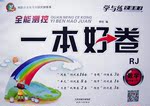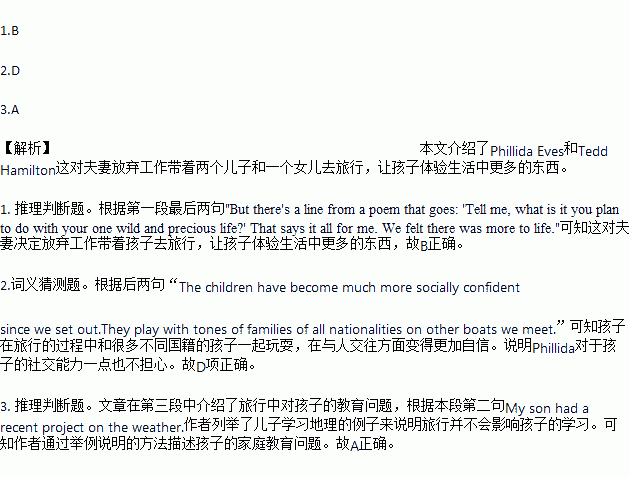题目内容
Phillida Eves and her husband Tedd Hamilton weren't unhappy living in the Galway countryside with their sons, Cian and Oisín, and their daughter, Soracha. "We had a lovely home, a car, lots of friends, and weekends sailing our boat," says Phillida. "But there's a line from a poem that goes: 'Tell me, what is it you plan to do with your one wild and precious life?' That says it all for me. We felt there was more to life."
So they quit their jobs, took their sons, then aged six and nine, out of school and went to southern Spain where they bought a 15-metre yacht(游艇) and headed up the coast to Barcelona. Soracha was not even three. And they brought along Poppy, the family dog. Now, two and a half years and 10,000 km later, they don't intend to stop. Tedd is a yacht engineer and can find work in ports. But, says Phillida, a supply teacher (代课老师), "Any family could do this."
The children are home-schooled using a correspondence course (函授课程). "My son had a recent project on the weather. The weather is crucial to us. My son knows more than most adults about weather systems, compasses, maps and directions. The weather, for him, means life or death."
Other subjects have become equally vivid. "They're living geography and history all the time. We've sailed round Italy, Sardinia, Sicily, and seen tiny islands we didn't know. The kids learned about ancient Romans by visiting Rome."
But what about social development? Again, Phillida is sanguine. "The children have become much more socially confident since we set out. They play with tons of families of all nationalities on other boats we meet."
Living for the moment, they believe, is a huge life lesson. "Our children never say they're bored." The other day they stopped mid-ocean and the kids swam, 110 km from land. "That's the kind of freedom we want for them," says Phillida. "That's the kind of freedom they've got."
1.The couple quit their jobs and took their children traveling because .
A. their children wanted to make friends of all nationalities
B. they wanted to experience more in their lives
C. their children wanted complete freedom
D. they were unhappy with their lives
2.The underlined word "sanguine" in Paragraph 5 is closest in meaning to " ".
A. patient B. curious
C. excited D. optimistic
3.The author describes the children's home schooling by .
A. using examples
B. making comparisons
C. following the order of importance
D. describing the changes in space order
 全能测控一本好卷系列答案
全能测控一本好卷系列答案
